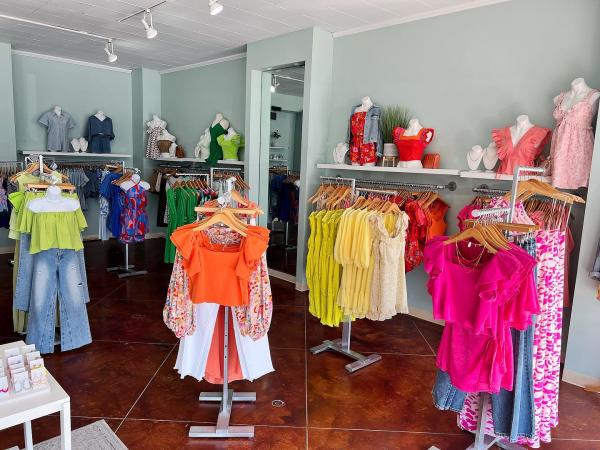A Deep Study the Globe of High-Fashion Runways: Understanding Clothing as Art
Designers, much like skillful artists, weave elaborate narratives through color, fabric, and form, challenging conventional standards and redefining elegance standards. As we explore these sartorial spectacles, we must contemplate: what function does style play in forming societal worths, and how does it reflect the ever-changing tapestry of human feeling and identity?
The Advancement of Runway Shows
The trajectory of runway programs has actually changed considerably over the years, progressing from unique sector events to fascinating eyeglasses that mix style with art. Typically, path programs were intimate events, kept in ateliers or little locations, primarily participated in by customers and sector insiders. These early presentations concentrated on the garments' craftsmanship and business practicality, using a direct and functional display of seasonal collections.
As the garment industry expanded, the nature of runway shows started to transform. The 1970s and 1980s marked a turning point, with developers looking for to distinguish themselves through even more staged discussions. This period saw the increase of fancy collections, choreographed versions, and thematic stories, proclaiming a new age where the runway ended up being an experiential system. The programs changed right into a kind of storytelling, where each collection shared a distinctive story or principle.
In recent years, modern technology and social media sites have further reinvented runway programs, making them obtainable to an international target market. Livestreaming and electronic systems have actually equalized fashion, enabling fanatics worldwide to witness these occasions in real-time (boutique fashion). This development shows a wider cultural shift, where high-fashion runways work as a vibrant intersection of performance, innovation, and style
Designers as Enthusiast Artists
Developers in the high-fashion sector have obscured the lines in between practical garment development and the theoretical realm of art. By accepting artistic techniques such as sculpture, painting, and progressive installments, developers craft garments that challenge standard style norms and raise them to art forms.
Visionary developers attract inspiration from a myriad of resources, including abstract art, historic referrals, and individual narratives. They have a distinct ability to envision and materialize ideas that press the limits of standard fashion, frequently redefining visual paradigms in the procedure. This imaginative ingenuity is showcased via significant silhouettes, innovative materials, and elaborate craftsmanship, which welcome viewers to experience style as more than just wearable products.
In addition, the runway offers as a canvas for these musicians, where lighting, music, and established design coalesce to create immersive experiences. These presentations are not just displays of clothing however are coordinated efficiencies that evoke emotion and provoke thought, affirming the designer's role as a true artist in the contemporary cultural landscape.
Cultural Influences in Style
Social tapestry weaves its intricate patterns into the fabric of fashion, affecting designers worldwide. The dynamic interchange of cultural tales, go to website traditions, and symbols informs and inspires collections that poise high-fashion paths. Developers meticulously attract from their heritage or engage with cultures unique from their very own, crafting garments that serve as visual stories. This social dialogue not only enhances the visual diversity yet additionally promotes a much deeper understanding and appreciation of global identifications.
The impact of culture on style is often seen in the reinterpretation of typical garments and patterns. The use of Japanese robes, Indian saris, or African prints in contemporary style reflects a blend of social credibility and modern looks. Designers such as Valentino's Pierpaolo Piccioli and Alexander McQueen's Sarah Burton have actually been known to integrate abundant cultural concepts into their couture collections, converting history into wearable art.

Innovation in Textile and Layout
Innovation in material and style continually reshapes the landscape of high-fashion, pushing borders and redefining opportunities. Designers are increasingly checking out the combination of innovation, such as 3D printing, which enables for the development of complicated frameworks that were previously unbelievable.
Furthermore, sustainability has become an essential motif in textile advancement. The fashion business is observing a surge in the use of green products, obtained from recycled plastics, natural fibers, and even eco-friendly parts. These innovations not just use brand-new textures and aesthetics but also address critical environmental concerns. Designers are accepting these materials to craft garments that are both mindful and aesthetically striking of their ecological footprint.
In terms of style, experimental types and avant-garde shapes are constantly transforming the path. By incorporating cutting-edge methods and non-traditional products, designers grow garments that obscure the line in between fashion and art, setting new criteria for creativity and expression in the high-fashion sphere.
Influence of Style on Culture
Style possesses an extensive impact on society, offering as both a reflection of social identity and a catalyst for social adjustment (boutique fashion). With its evolution, fashion click here now has actually mirrored societal shifts, enveloping the zeitgeist of numerous ages.
Furthermore, fashion has the power to bridge social gaps, cultivating understanding and appreciation among diverse teams. As globalisation accelerates, the cross-cultural exchange of style ideas comes to be significantly significant, advertising inclusivity and diversity. The surge of streetwear, originating from city subcultures, shows how style can go beyond socio-economic boundaries, granting people a means of self-expression and empowerment.
Essentially, fashion is not merely concerning visual appeals; it is a vibrant pressure that influences worths, attitudes, and societal progression (boutique fashion). By continually interacting with cultural and social currents, style stays an essential component of the collective human experience

Verdict
High-fashion runways act as dynamic arenas where garments goes beyond performance to become an expressive art form. Designers, akin to visionary artists, manage collections that show identification, feeling, and social stories, challenging traditional aesthetics. The fusion of innovative fabric and style, paired with intricate set layouts, lights, and music, produces immersive experiences that celebrate cultural diversity. This junction of fashion and artistry not only astounds target markets worldwide but likewise influences social assumptions and advertises a deeper gratitude for cultural diversity.

Cultural tapestry weaves its intricate patterns right into the fabric of fashion, affecting designers globally.Style wields a profound impact on society, serving as both a reflection of cultural identity and a catalyst for social modification.